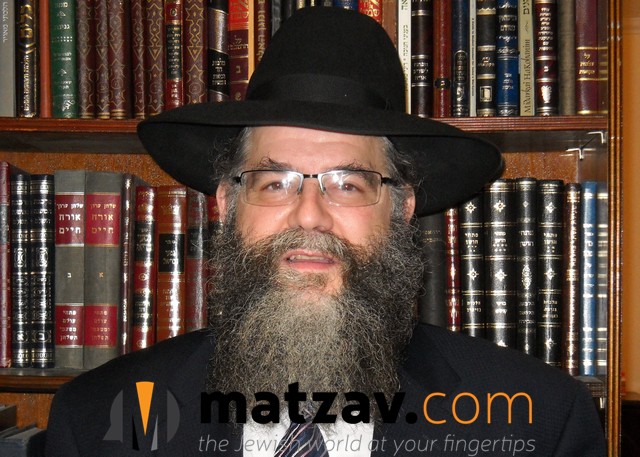
By Rabbi Nosson Greenberg
In this week’s parshawe come across one of the four times in the Torah a word is cantillated with a Shalsheles accent. It can be found when Moshe Rabainu slaughters the last of three sacrifices on the first day of the eight-day dedication of the Mishkan. The passuk says, “Vayishchat…” – “And he slaughtered….” (Vayikra, 8:23), and it is this word that proudly displays the rare Shalsheles. Much has been written to explain why only four specific words in the Torah receive the much vaunted Shalsheles. Some also wonder why, if there is something about Moshe’s act of shechita that demands aShalsheles, the Torah does not place it the first two times that he shechted animals that day?
Perhaps we can offer the following analysis. The Shalsheles is an easily recognizable accent, a severe triple zigzag descending from right to left. I believe that its shape can help us understand why it is used over here specifically by the third and final korban that Moshe shechted.
I once heard from Rabbi Mordechai Twerski, the HornosteiplerRebbe of New York, a wonderful way of visually describing a good marriage. Let’s say that a circle represents a real strong marriage, perfectly round and seamless. If one were to take a pair of scissors and cut the circle into two pieces, one piece representing the husband’s role in marriage and the other piece the wife’s, how should each piece appear? Many would make the mistake that the circle should be cut down the middle, creating two equal semicircles. After all, both partners in a marriage supply equal amounts of effort, so an equal 50% share of the circle would be a correct way of describing each role. Said Rabbi Twerski, sure each piece should be made up of 50%, but it should not look like two semicircles, rather each piece will have jagged zigzag edges that when put together with the other will form a perfect sphere. He explained that two perfect semicircles suggest two people who each have brought the same strengths and weaknesses into the marriage. They are mirror images of each other. That is not normally the recipe for a happy union. Rather each piece should be a zigzag-edged semicircle. The protrusions (zigs?) are one’s strengths and the indentations (zags?) are one’s weaknesses. A good marriage is where each spouse recognizes his/her strong points and uses them to complement the weak areas of the spouse, and at the same time recognizes that there are areas in which he/she has deficiencies and embraces the opportunity to be helped by the other.
The relationship between guf and neshama -body and soul is similar to a marriage. The neshama is a powerhouse of spirituality but its ability to express its religious fealty in a physical world is compromised. It thus has zigzag edges; the zigs being its lofty holiness, and the zags its inability to express it. The body too is zigzagged; the zigs being the ability to express itself and the zags the disinterest in matters of kedusha. But put them together they form the perfect synthesis of religious expression, each one feeding off the other’s strengths, filling the voids of weakness and forming a magnificent circle of religious vitality.
The first two korbanos offered by Moshe, the Chattos and the Olah, were not eaten at all. The third korban, however, a Shelamim, had some parts sacrificed on the Mizbayach and other parts eaten by Aharon& his sons. A Shelamimis a microcosm of the required synthesis between the gufand neshama. The PonovezherRav once pointed out that even though a goy can bring a korban to Hashem, he can only bring an Olah which is completely sacrificed. For the concept of dedicating an entire entity to G-d is easily understood by all religions (celibacy and Monastic silence are great examples of this). But the concept of a Shelamim, where the same animal used to pay homage to G-d provides man with a delicious steak dinner, is something that is foreign to a goy,and is thus off limits to him. Torah doctrine, however, is different. It teaches us that when the physical gufand the holy neshama work in tandem, they will form the perfect synthesis of religious expression. The Shelamim steak can therefore be eaten (and enjoyed) at the same time that other parts of the same animal are being dedicated to Hashem on the Mizbayach.
Now we can understand the Shalsheles, and why it was placed specifically with the slaughter of the Shelamim. This was the first official time in theMishkan that a Shelamim was being offered. To show the role played by both the physical element and its spiritual partner the neshama, the cantillation chosen is the zigzaggyShalsheles, highlighting the strengths and weaknesses of both partners.
Rabbi Nosson Greenberg is rov of Khal Machzikei Torah of Far Rockaway, N.Y., and maggid shiur at Yeshiva of Far Rockaway.
{Matzav.com Newscenter}











